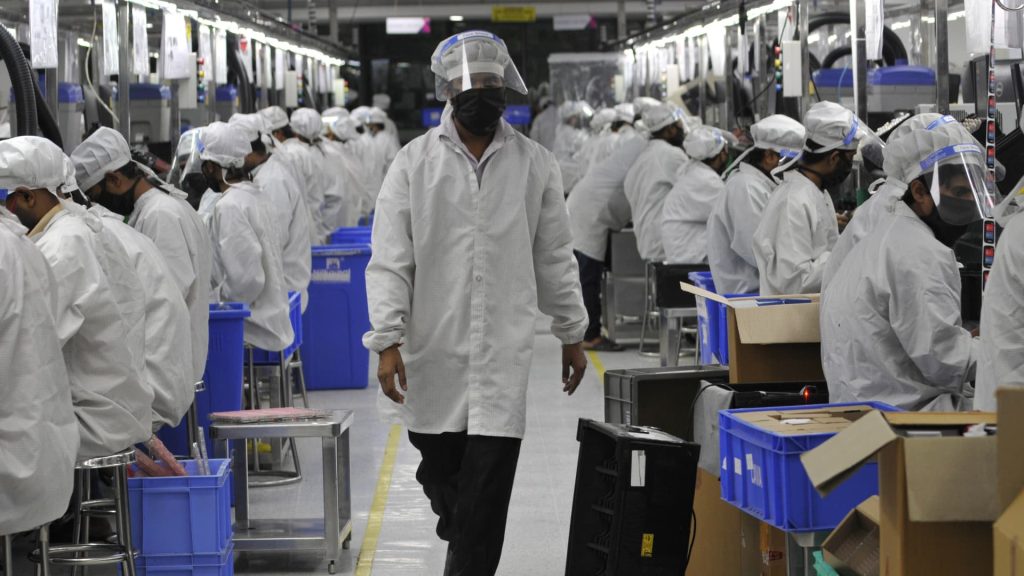India is looking to become a top manufacturer in Asia as companies shift away from China, but there are hurdles to overcome to dethrone Vietnam. The U.S. has encouraged American companies to move operations out of China and into countries like Vietnam and India, particularly in the electronics and technology sectors. Vietnam currently leads the way in exports, signaling a competitive advantage over India due to its strong manufacturing capabilities. Vietnam’s more straightforward business environment and lower import duties make it an attractive option for foreign investors.
India’s relationship with the U.S. has improved in recent years, but Vietnam still holds an advantage with a long-standing trade deal with Washington. The country also benefits from economies of scale in manufacturing and a focus on manual labor, particularly in sectors like apparel. U.S. tech giants are increasingly shifting parts of their supply chains to India, with Apple sourcing batteries from Indian factories and Google set to begin Pixel phone production in the country. However, India’s 10% import duty for information and communication technologies remains a hurdle for the country’s manufacturing ambitions.
India has begun lowering import taxes to attract foreign firms to its manufacturing hub, with a focus on industry-specific tariffs rather than across-the-board reductions. This includes cuts in import taxes for metal and plastic parts used in mobile phone manufacturing. While this has led to an increase in electronics exports to the U.S., experts caution that a sustainable advantage in attracting FDI investment lies in ease-of-doing business issues rather than taxes and tariffs. Vietnam’s strong position in this regard gives it a long-term advantage over India.
Infrastructure and efficiency are key factors in India’s efforts to improve its manufacturing capabilities. Lengthy shipment and road delivery times due to infrastructure shortcomings lower India’s appeal to foreign companies. The country is investing billions to improve its railway system and modernize logistics systems to enhance supply chain models. Meanwhile, Vietnam’s warming relations with China present an opportunity for India to compete in the electronics manufacturing sector. China’s close relationship with Vietnam may give some companies pause, opening the door for India to strengthen its position in the market.
In conclusion, India faces challenges in its quest to become a top manufacturer in Asia as companies seek alternatives to China. Vietnam’s lead in exports and favorable business environment pose obstacles for India to overcome, despite improvements in its relationship with the U.S. Lowering import taxes and improving infrastructure are crucial steps for India to attract foreign investment and bolster its manufacturing sector. With Vietnam’s close ties to China, India has an opportunity to position itself as a viable alternative in the region. Efforts to enhance supply chain efficiency and ease-of-doing business issues will be key in India’s long-term competitiveness in the global manufacturing landscape.















